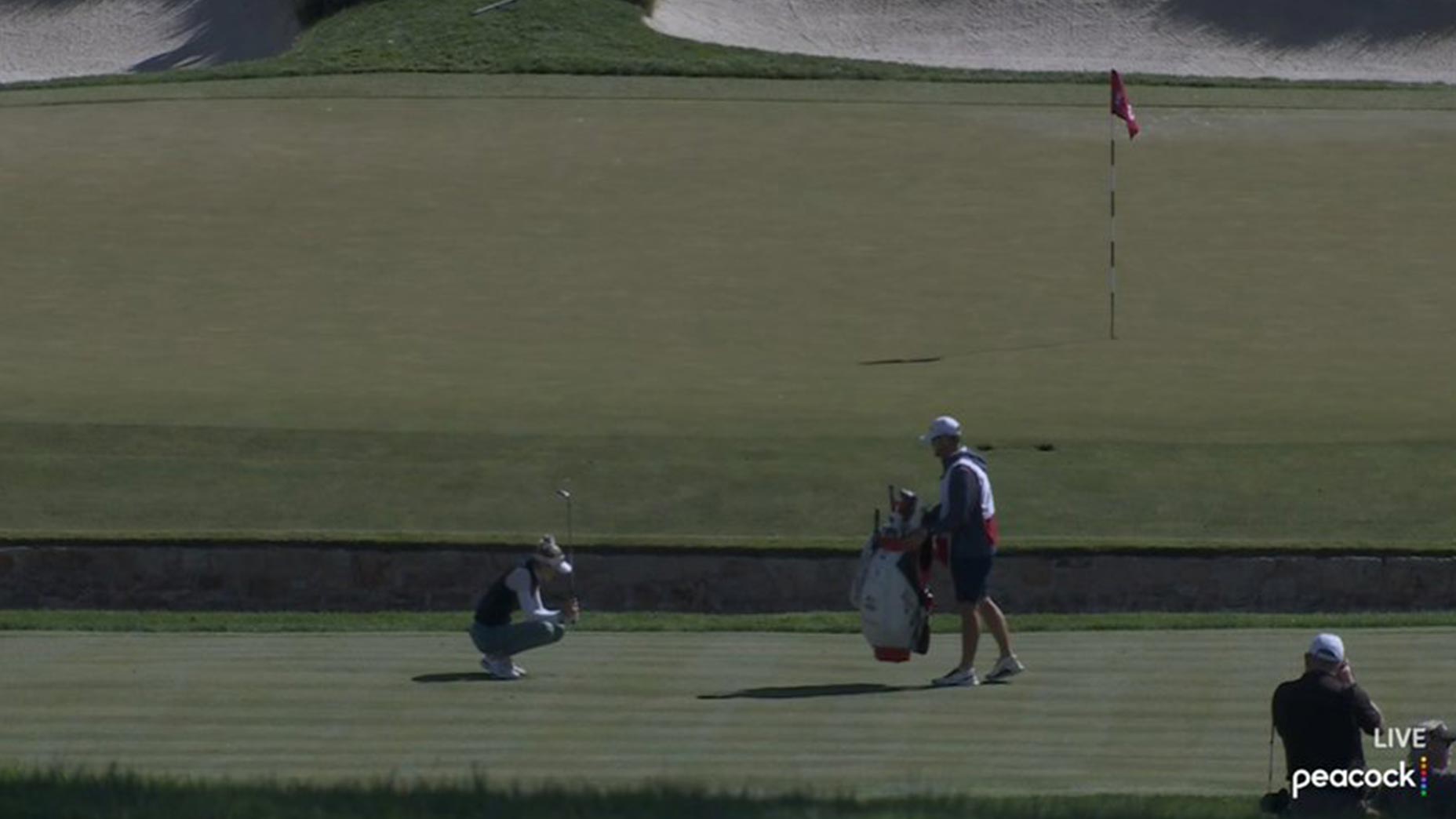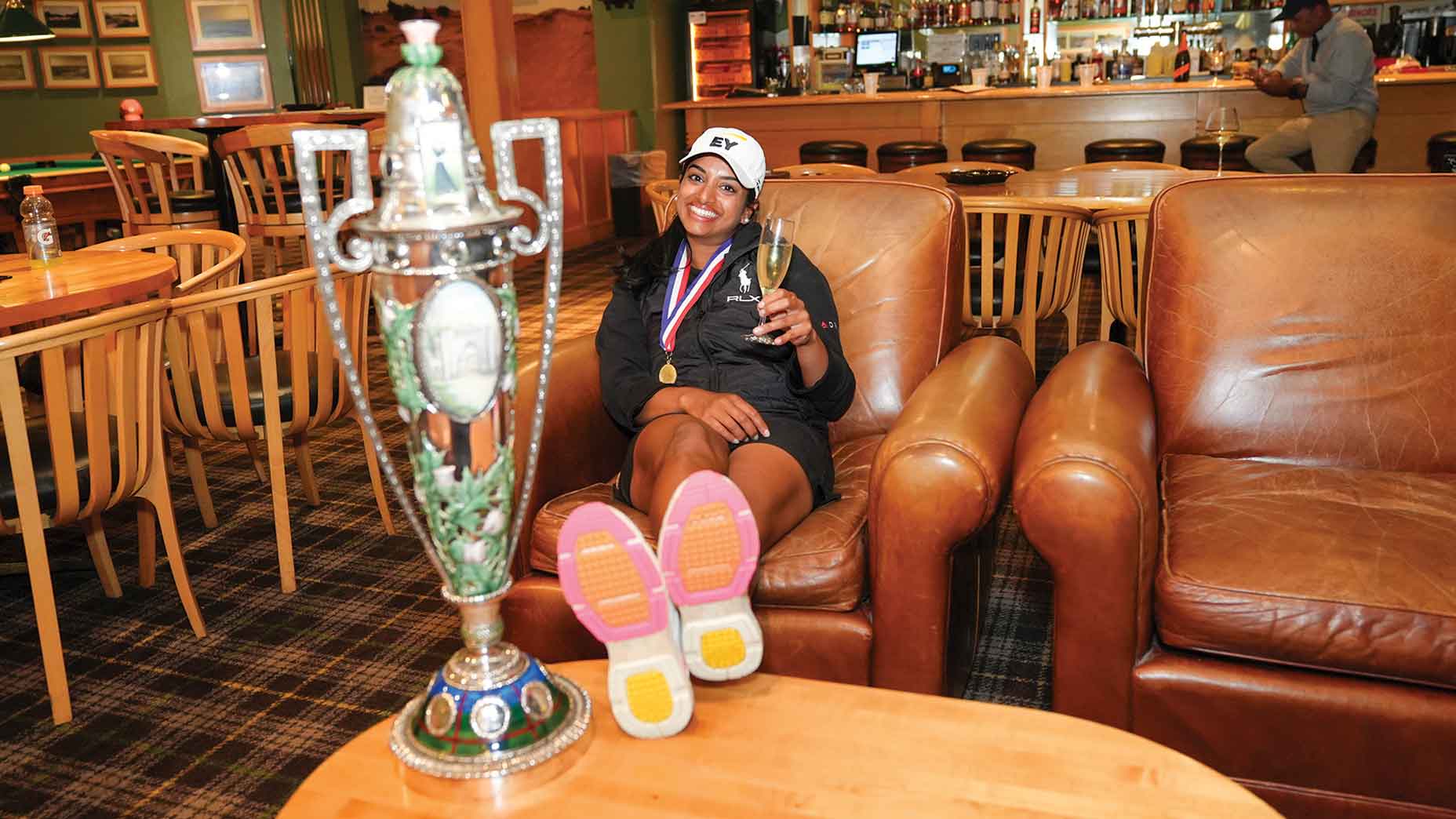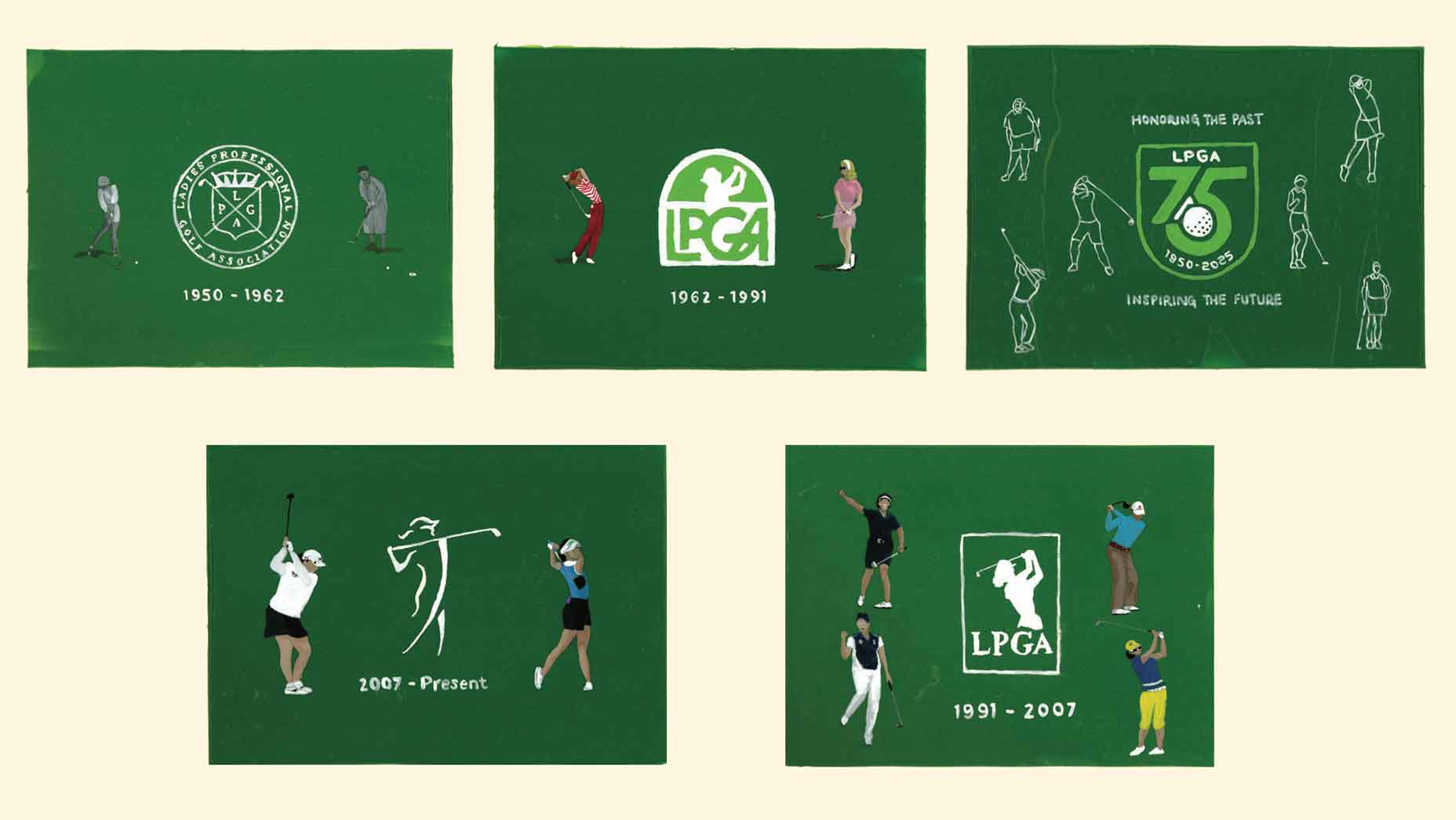LANCASTER, Pa. — Nelly Korda walked off Pebble Beach’s iconic 18th green last July and entered the scoring tent. She added up the numbers on her scorecard, double-checked to make sure they were correct and signed at the bottom. At that moment, it became official: Korda had posted the worst professional round of her U.S. Women’s Open career, a 10-over 80.
Ten months later, and 2,800 miles to the east, Korda duplicated that gaffe. The setting might’ve been different — the countryside of Pennsylvania instead of the shores of the Pacific — but the result was all the same.
This time, the sting must hurt worse than most. Korda entered this year’s U.S. Women’s Open in the midst of a historic season, one that saw her win six tournaments in eight starts (including a major!). But on the opening Thursday of the biggest event in women’s golf, all she could muster was another 10-over 80.
“Just a bad day in the office,” Korda said matter of factly. “I just kept making bogeys.”
There were six squares on her card on Thursday (she made three birdies, too), but it was the lone “other” that defined her disastrous day at Lancaster Country Club.

Following her 8:13 a.m. tee time off No. 10 alongside Nasa Hataoka and Megan Khang, the trio’s pace quickly ground to a halt. Not only because of the crispy conditions that were wreaking havoc on the field, but also because of the diabolical par-3 12th.
The 180-yard hole plays from an elevated tee down to a shallow green some 50 feet below. The putting surface features a severe back-to-front pitch (a classic characteristic of William Flynn designs) with a false front running into a creek guarding the green. When Lancaster last hosted the USWO in 2015, there were 31 doubles made on the hole, the most of any on the course. It didn’t take long for the hole to once again make its mark on the championship.
Nelly Korda dunks 3 in water, makes 10 in shocking U.S. Women’s Open startBy: James Colgan
When Korda’s group arrived at the hole (their third of the day) the group ahead was already seeing how difficult it can play. Amateur sensation Ingrid Lindblad found the water with her tee shot, eventually making a double-bogey 5, while pros Gabby Lopez and Jiyai Shin both missed the green as well. All the while, Korda’s group waited on the tee box for their turn to play. When it was finally time to hit, “25 to 30 minutes” had passed, according to Korda’s estimation.
“I just didn’t really know what to hit,” Korda said. “I kind of teed it up behind the tee box a little one club length back. I hit a 6-iron and it just kind of penetrated through the wind.”
The club selection turned out to be ill-fated. Instead of settling on the green, her ball found the back bunker. To make matters worse, there was a small leaf directly underneath her ball. When she splashed her shot onto the green, it didn’t have the proper grab, and all Korda could do was helplessly watch as her ball trickled off the front of the green and into the water.
“When I hit, it kind of rocketed through,” she said. “Couldn’t really do anything about that.”
She then dropped on the opposite side of the creek, only to leave her chip shot short and watch it roll back into the creek. She repeated the miscue a few moments later, dropping into a defeated crouch in disbelief. After she finally did get her ball to settle on the green, she two-putted for a septuple-bogey 10.
“Making a 10 on a par-3 will definitely not do you any good at a U.S. Open,” she said.
Just over an hour after teeing off in search of her second-consecutive major title, Korda’s title hopes were all but shattered.
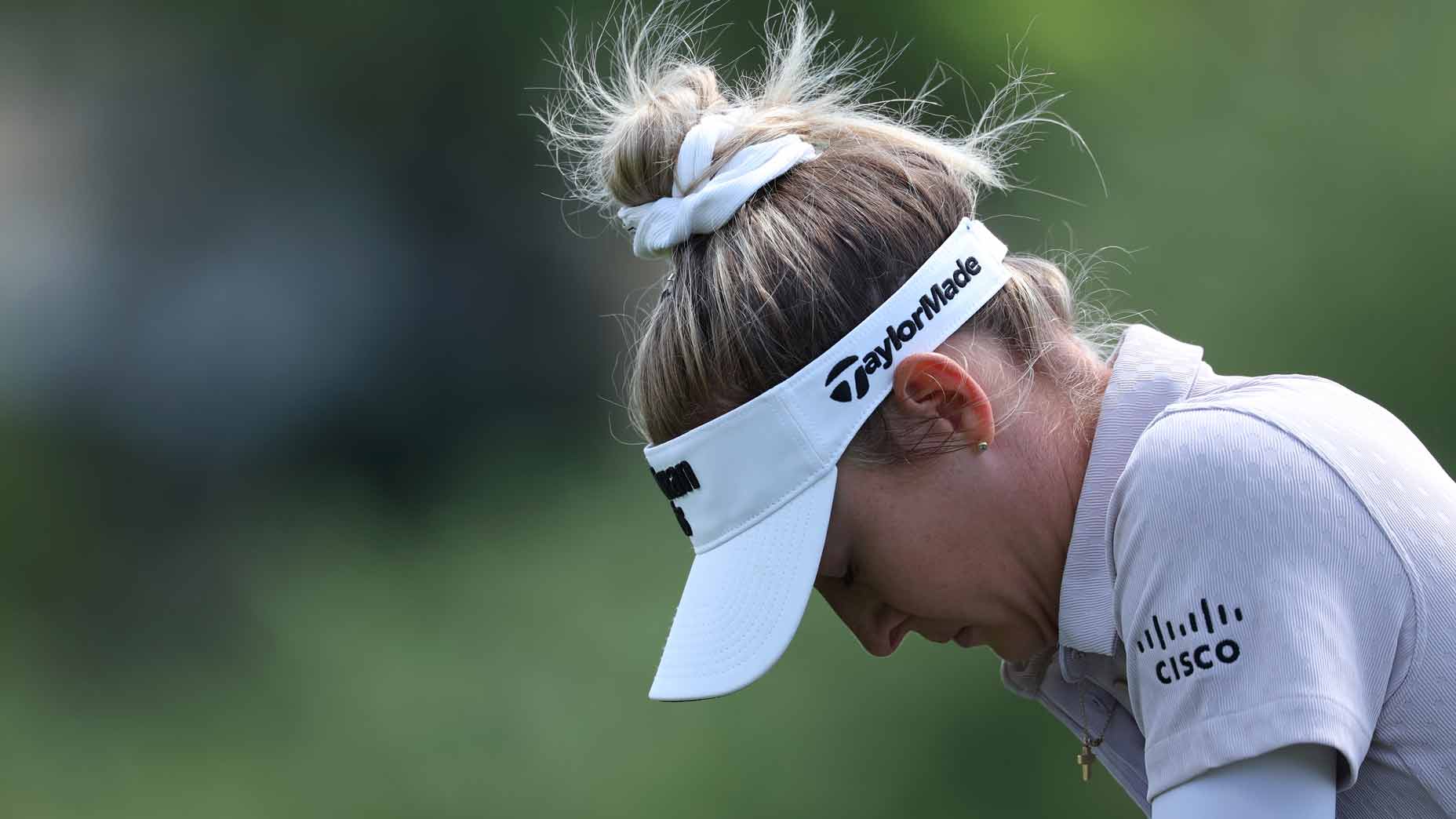
Korda entered this week as the heavy favorite. Not only because of the historic hot streak she was riding, but also because of the type of test this course would present.
With long holes, thick rough, elevated greens and baked-out fairways, Lancaster Country Club promised to be a proper U.S. Open test. Only the best of the best would be able to survive 72 holes. And in 2024, no one has been better than Korda.
The line of thinking was logical enough. Korda is the best player in the world, and her strengths match up with the skills most tested at major championships. If there were ever a surefire pick to win a golf tournament, Nelly Korda at the U.S. Women’s Open was it.
That the golf world at large was so bullish on Korda’s chances was not incorrect in a vacuum. But when looking at the world No. 1’s career in the national championship — and in other LPGA events — it gives reason for some pause.
USGA events have long been known for their excruciatingly difficult setups and exacting tests. Over the past five years, all but one U.S. Women’s Open champion has finished single-digits under par, and there have been just four champs double digits under par since the turn of the century.
Why does this matter? Well, Korda has found much more success on setups that are much more birdie-friendly, where par is seen not as the goal but as a missed chance to go deeper under par. This is the opposite of the U.S. Open ethos. In the grind-it-out, survival test that is put on by the annually by the USGA, par is always your friend.
In all but two of Korda’s LPGA wins (including her two major titles), her winning score has been double digits under par. In another event, she was nine under, while the other win came in the match-play format. Korda has never won when she’s been forced to grind it out, make pars and outlast the field.
Looking at her U.S. Women’s Open track record, this theme holds true. In her nine previous starts, she’s finished inside the top 10 just twice — in 2018 and 2022. In both those years, the winner finished double digits under par, with Shoal Creek and Pine Needles playing as two of the easiest U.S. Women’s Opens in recent memory.
In other words, when the setups have been at their toughest, Korda has not found much success. That theme continued Thursday at Lancaster Country Club.
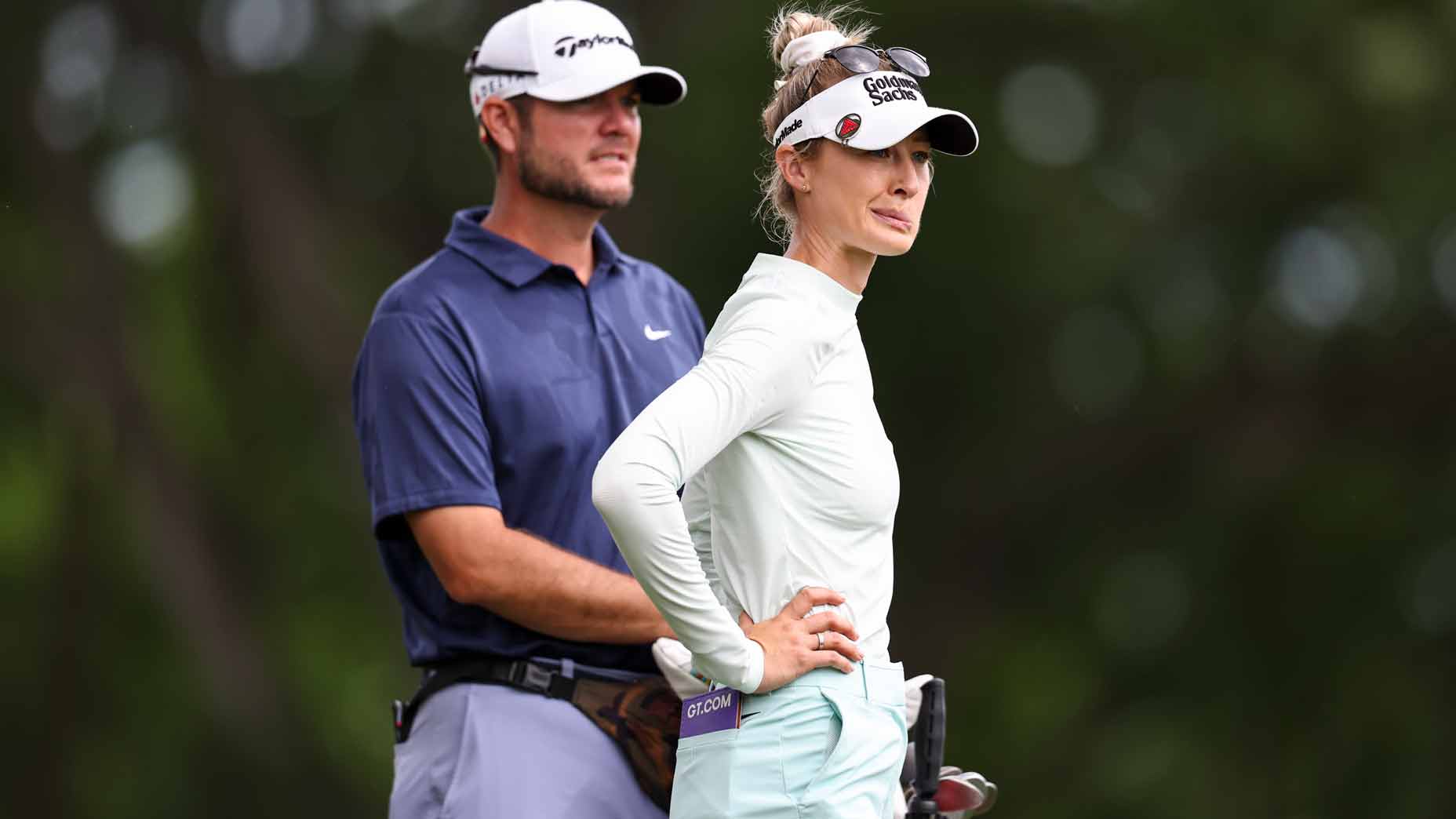
From the moment Korda walked off the 12th green, she looked like an entirely different golfer. The game that she’d made look so easy for the past five months was finally hitting back. No longer did golf look simple. Instead, she looked human.
“That’s golf, man,” said her coach, Jamie Mulligan, behind the 18th green. “It’s a hard game.”
Bad shots were followed by one-handed follow-throughs. Missed putts featured muttering under her breath. When Korda yanked a drive into the left rough on the par-5 7th, she dropped the club in disgust, glaring at her driver on the ground that had suddenly betrayed her.
An even-par back nine, featuring three birdies, showed reasons for optimism, but she couldn’t avoid the bogeys. A three-putt at the 9th was the last square on her card and ensured a second-straight U.S. Women’s Open round in the 80s.
“I just kept making bogeys,” Korda said. “My last two rounds in the U.S. Women’s Open have not been good.”
When she emerged from scoring, Korda faced the media for a quick recap of her day. Her spirits were high (considering the circumstances), but there was a twinge of sadness in her voice. With the stakes at their highest, her game had suddenly abandoned her.
She headed straight to the range next, delaying lunch for another 45 minutes as she and Mulligan searched for answers, pounding ball after ball into the Pennsylvania sky.
“I’m human,” Korda said. “Today was just a bad day. That’s all I can say.”

